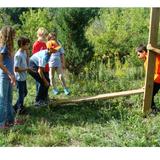For the 2025-26 school year, there are 3 private elementary schools serving 204 students in 53149, WI.
The top ranked private elementary school in 53149, WI is Natures Classroom Institute & Montessori School.
The average acceptance rate is 90%, which is higher than the Wisconsin private elementary school average acceptance rate of 89%.
67% of private elementary schools in 53149, WI are religiously affiliated (most commonly Baptist and Lutheran Church Missouri Synod).
Top Ranked 53149 Wisconsin Private Elementary Schools (2025-26)
School
Location
Quick Facts
W336 S8455 Hwy E
Mukwonago, WI 53149
(262) 363-2815
Mukwonago, WI 53149
(262) 363-2815
Gr: PK-12 | 54 students Tuition & acceptance rate listed
Mukwonago Baptist Academy
(Baptist)
1610 Honeywell Rd
Mukwonago, WI 53149
(262) 363-1731
Mukwonago, WI 53149
(262) 363-1731
Gr: PK-12 | 52 students Avg. class size: 5 students
St. Johns Evangelical Lutheran School
(Lutheran Church Missouri Synod)
410 County Road Nn
Mukwonago, WI 53149
(262) 363-4999
Mukwonago, WI 53149
(262) 363-4999
Gr: K-8 | 98 students
53149, Wisconsin Private Schools (Closed)
School
Location
Quick Facts
St. James Catholic School (Closed 2010)
(Catholic)
830 County Road Nn E
Mukwonago, WI 53149
(262) 363-7615
Mukwonago, WI 53149
(262) 363-7615
Gr: NS-9 | 79 students
Frequently Asked Questions
What are the top ranked private elementary schools in 53149, WI?
The top ranked private elementary schools in 53149, WI is Natures Classroom Institute & Montessori School.
How many private elementary schools are located in 53149?
3 private elementary schools are located in 53149.
What percentage of private elementary schools are religiously affiliated in 53149?
67% of private elementary schools in 53149 are religiously affiliated (most commonly Baptist and Lutheran Church Missouri Synod).
Recent Articles

Paying for Private School: 2025 Family Guide
A 2025 guide to paying for private school, including tuition trends, financial aid, scholarships, and smart budgeting strategies.

Student Success Predictors at Community Colleges
A practical guide to student success predictors at community colleges for private school advisors helping graduates navigate two-year pathways.

Navigating the FAFSA & Financial Aid Timeline for Community College
Learn how to navigate FAFSA and financial aid timelines when starting at community college — from application to disbursement in 2025.




